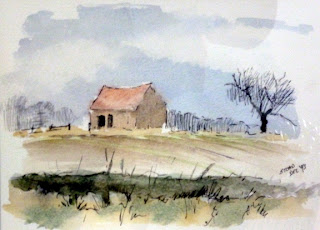Those of you who are at all interested
in tennis will know that this is week one at Wimbledon. We are, of
course, immensely proud that the All England Tennis and Croquet Club
was the one that started off this whole business. You could, I
suppose, describe it as a sport but when you see the open snarling
mouth, more becoming on the face of a baboon than a human being, on
the face of a young man who has just won a point or are watching two
young women screaming at each other over the tennis net you are
forced to wonder whether it is more of a gladiatorial contest than
anything else. Was this the atmosphere during the ‛games’ held by
the Romans when “we who are about to die, salute you, Ceaser”?
Anyway, it has been a remarkable couple
of days, not least thanks to the injuries which have been caused by
motley slips and tumbles. These courts are grass and grass is a very
different surface to those on which these tennis heroes and heroines
usually play. As has been pointed out, in the early days until the
wear of play takes its toll, grass tends to be slippery. It is, of
course, the same for all taking part so there is no unfairness
involved. As John MacEnroe said, “you have to adjust the way you
move”.
I suppose I
was about thirteen when I decided I wanted to learn the names of the
various grasses that were to be found in the lanes, fields and woods.
In those days my preferred reference books were from the ‛Observer’
series which were published by Thomas Warne from 1937 until the
beginning of this century. I had – still have, come to that –
quite a few of these pocket sized books. British Birds was, I think,
the first and that was followed by British Butterflies, British Wild
Flowers, Common British Insects and Spiders, Larger British Moths,
Pond Life, Dogs (as you would expect) and British Grasses, Sedges and
Rushes. A small enough selection, really: the list runs into three
figures.
And so it was
I set out boldly that Eastertide to start to learn the names of all
the grasses in the neighbourhood. I failed, of course, in much the
same way as I failed when it came to wild flowers, insects and
spiders. There are just too many of them with many species that look
so alike that you have to take infinite pains to work out to which
your specimen belongs. I just do not have the patience.
One thing all
these books did, and the book on grasses etc. was no exception, was
to get me looking. It is a habit that remains with me to this day
and, despite a love for the arts and music, from where I sit nothing
transcends the glory and beauty of the natural world.
Anyway, I
decided that I would browse through my photo files and see what I
could find in the way of interesting grasses, sedges and rushes.
How about that for a truly noble head? Still using memory rather than my notes, I am pretty certain that this most regal dachshund is, quite simply, known as Jack.



























